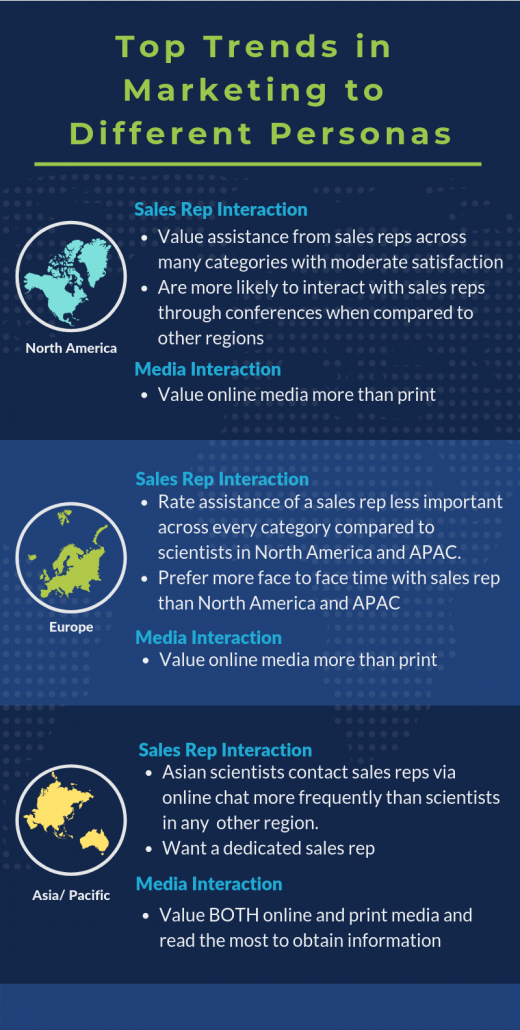Trends in Life Science Marketing: Generation, Geography, & Personalization Matter
Age may be “just a number” but it’s an important one when you’re trying to connect with a group of scientists from varying generations. Whether you’re distributing product information through advertisements or at conferences or empowering your salesforce, the key to grabbing a target audience’s attention is to provide them with a personalized journey based on their needs and concerns. But how do you know what to customize or where to focus? Our analysts at BioInformatics Inc. have done many studies over the years and found a few common trends.
First, a successful advertising campaign contains a blend of both digital and print media as scientists of all ages globally read both types. Advertising should be complimentary, and work to draw attention to your products and brand through multiple channels. Understandably, scientists were very receptive to advertising that was polite and presented information concisely. So how does age and region influence this? Scientists across generations approach and interact with online and print advertising differently. While older generations may gravitate toward one type of advertisement (user manuals or videos of your products), millennials are more open to trying new things such as interacting with product demonstration videos. They are also less fixed in their brand preferences are open to developing a relationship with your brand. With regards to region, our studies show that life scientists within APAC are more likely to click sponsored links, and to save and share print magazines with others. It’s important to keep these factors in mind as you curate your target audience. Even retargeted advertising done right “feels” good to your audience because it targets people who have previously demonstrated an interest in your content.
These factors are also influential in what your customers expect from the conferences where you exhibit. Millennials and Xennials find conferences an important source for professional development and networking, which are very important at the early stage of a scientist’s career. Generally, scientists feel that the greatest benefit of conferences on their research is returning with a new idea that saves time or money.
Generational and regional differences have an impact on what scientists need from your sales reps as well! Younger customers more frequently need assistance with more aspects of logistics and order placement. European customers want less assistance, find sales reps less important, and are generally less satisfied with their sales reps. Asian customers want more assistance, find their sales reps more important, and are more satisfied. North American customers fall in between these two extremes. These insights are reflective of the type of personalization needed within your salesforce. However, that doesn’t mean your salesforce has to be “re organized” from scratch every time. The three most popular ways to organize a sales force are by discipline, by technique, and by product category. Scientists simply want to be able to obtain information quickly and effectively. However, our analysts also noted that the assistance of a sales rep is most important when resolving problems with an order.
Advertising, conferences, and your sales reps are all channels by which your audience and clients can learn about and interact with your brand. There are three phases that comprise customer’s purchasing journey and it is important that they have a positive customer experience at every touchpoint in every phase.

Our market research reports have more information on how age and location influence the marketing preferences of scientists enabling you to create a more personalized journey for your customers. Our reports also contain much deeper analysis of how different generations trust or don’t trust various sources for information as well as how they’re truly interacting with your brand.






